|
Books Should Be Free Loyal Books Free Public Domain Audiobooks & eBook Downloads |
|
|
Books Should Be Free Loyal Books Free Public Domain Audiobooks & eBook Downloads |
|
Literature |
|---|
|
Book type:
Sort by:
View by:
|
By: Pansy (1841-1930) | |
|---|---|
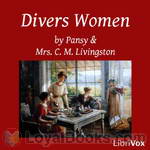 Divers Women
Divers Women
A collection of short stories, highlighting some of the best and worst characteristics we women are capable of in our Christianity and in our home life. | |
By: William Wells Brown (1814-1884) | |
|---|---|
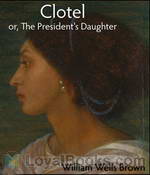 Clotel, or, The President's Daughter
Clotel, or, The President's Daughter
Clotel; or, The President's Daughter is a novel by William Wells Brown (1815-84), a fugitive from slavery and abolitionist and was published in London, England in December 1853. It is often considered the first African-American novel. This novel focuses on the difficult lives of mulattoes in America and the "degraded and immoral condition of the relation of master and slave in the USA" (Brown). It is about the tragic lives of Currer, Althesea, and Clotel. In the novel, Currer is the former mulatto mistress of President Thomas Jefferson who together have two daughters, Althesea and Clotel... | |
By: Robert W. Service (1874-1958) | |
|---|---|
 Songs of a Sourdough
Songs of a Sourdough
Reputedly the best-selling poetry collection of the 20th century, 'Songs of a Sourdough' is best known for Robert W. Service's classic Yukon ballads, 'The Shooting of Dan McGrew' and 'The Cremation of Sam McGhee'. Service was born in Preston, Lancashire, and grew up in Scotland. In his twenties, he made his way to Canada and settled in the Yukon where he worked as a bank clerk but evidently dreamed of more adventurous pursuits. Service's readings of his poems show that he could adopt either a Scottish or North American accent. Here they are read in an accent that is not too far removed from the place of his birth. | |
By: Émile Gaboriau (1832-1873) | |
|---|---|
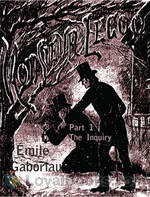 Monsieur Lecoq: The Inquiry
Monsieur Lecoq: The Inquiry
Monsieur Lecoq is a captivating mystery, historical and love story : Around 11 o'clock, on the evening of Shrove Sunday 18.., close to the old Barrière d'Italie, frightful cries, coming from Mother Chupin's drinking-shop, are heard by a party of detectives led by Inspector Gévrol. The squad runs up to it. A triple murder has just been committed. The murderer is caught on the premises. Despite Gévrol's opinion that four scoundrels encountered each other in this vile den, that they began to quarrel, that one of them had a revolver and killed the others, Lecoq, a young police agent, suspects a great mystery... | |
By: Dinah Craik (1826-1887) | |
|---|---|
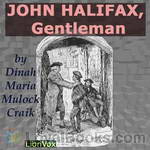 John Halifax, Gentleman
John Halifax, Gentleman
This novel, published in 1856, was one of the popular and beloved novels in the Victorian era. It is told in the first person by Phineas Fletcher, an invalid son of a Quaker tanner who is presented to us in the beginning as a lonely youth. John Halifax, the first friend he ever had, is a poor orphan who is taken in by his father to help in the work which his sickly son can't constantly do. Phineas tells us in an unforgettable way how John succeeded in rising from his humble beginning and become a wealthy and successful man. But with the money come horrible troubles... In an unforgettable manner, we learn to know all the characters of the novel as if they really lived. | |
By: L. Adams Beck (1862-1931) | |
|---|---|
 The ninth vibration and other stories
The ninth vibration and other stories
This is a collection of the following short stories: The Ninth Vibration -- The Interpreter : A Romance of the East -- The Incomparable Lady : A Story of China with a Moral -- The Hatred of the Queen : A Story of Burma -- Fire of Beauty -- The Building of the Taj Majal -- How Great is the Glory of Kwannon! -- The Round-Faced Beauty. Many of them are romantic, some of them are fantasy and others are occult fiction.(Introduction by Linda Andrus) | |
By: William Congreve (1670 -1729) | |
|---|---|
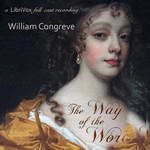 The Way of the World
The Way of the World
The Way of the World is a play written by British playwright William Congreve. It premiered in 1700 in the theatre in Lincoln's Inn Fields in London. It is widely regarded as being one of the best Restoration comedies written and is still performed sporadically to this day.The play is based around the two lovers Mirabell and Millamant (originally famously played by John Verbruggen and Anne Bracegirdle). In order for the two to get married and receive Millamant's full dowry, Mirabell must receive the blessing of Millamant's aunt, Lady Wishfort... | |
By: Rex Beach (1877-1949) | |
|---|---|
 Silver Horde
Silver Horde
The Silver Horde , is set in Kalvik, a fictionalized community in Bristol Bay, Alaska, and tells the story of a down on his luck gold miner who discovers a greater wealth in Alaska's run of salmon (silver horde) and decides to open a cannery. To accomplish this he must overcome the relentless opposition of the "salmon trust," a fictionalized Alaska Packers' Association, which undercuts his financing, sabotages his equipment, incites a longshoremen's riot and bribes his fishermen to quit. The story line includes a love interest as the protagonist is forced to choose between his fiance, a spoiled banker's daughter, and an earnest roadhouse operator, a woman of "questionable virtue." | |
 Flowing Gold
Flowing Gold
Unfairly given a dishonorable discharge from the army, Calvin Gray goes to Dallas, where he manages to win the trust of a jeweler and is able to sell a number of diamonds to the newly oil rich Briskows. He makes friends with the family and helps them adjust to their newly found riches. The Briskows, in turn, help him prove false the charges that caused his dismissal from the army. | |
By: Garrett P. Serviss (1851-1929) | |
|---|---|
 Columbus of Space
Columbus of Space
A classic science fiction adventure in the style of and dedicated to the readers of Jules Verne. An independent scientist discovers the secret of “inter-atomic energy”, and with it builds a craft which carries himself and three friends to Venus, where they discover the dwellers of the dark side, incredible floating cities, and peril at every turn. | |
By: Hamlin Garland (1860-1940) | |
|---|---|
 Son of the Middle Border
Son of the Middle Border
In all the region of autobiography, so far as I know it, I do not know quite the like of Mr. Garland's story of his life, and I should rank it with the very greatest of that kind in literature. . . . It is the poet who sees the vast scale of human struggle with nature or the things she will withhold unless they are forced from her by man's tireless toil and mighty mechanism, and in the vision he knows a battle-joy as distinctive of this Son of the Middle Border as his fidelity to the sordid and squalid details of the campaign, or his exultation of the beauty of the West which he has so passionately hated and finally so passionately loves... | |
By: Laurence M. Janifer (1933-2002) | |
|---|---|
 Supermind
Supermind
FBI agent Kenneth Malone lives in a world where psionic powers such as telepathy and teleportation exist. He must cope with them as well as an FBI Director who leaves Malone continually confused about what situation he is being asked to handle and what he is expected to do about it. Someone or something is causing confusion in the U.S. Government, Unions, The Mafia, and other sectors of society and Malone has been given the job of finding the source of the confusion. A good story composed of science fiction and slap stick comedy with a bit of romance thrown into the mix. | |
By: Eugene O'Neill | |
|---|---|
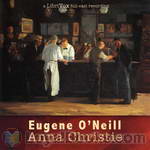 Anna Christie
Anna Christie
Eugene O'Neill's drama Anna Christie was first produced on Broadway in 1921 and received the Pulitzer Prize in 1922. It focuses on three main characters: Chris Christopherson, a Swedish captain of a coal barge and longtime seaman, his daughter Anna, who has grown up separated from her father on a Minnesota farm, and Mat Burke, an Irish stoker who works on steamships. At the beginning of the play Chris and Anna are reunited after fifteen years apart. Anna comes to live on her father's coal barge, but hides the secret of her past from him. When she meets Mat after an accident in the fog, they almost immediately fall in love - but Anna finds that forging a new future will not be easy. | |
By: William Carleton (1794-1869) | |
|---|---|
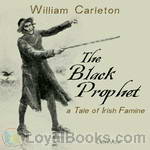 The Black Prophet - A Tale of Irish Famine
The Black Prophet - A Tale of Irish Famine
A story about the Irish, just before the onset of the famine of 1847, with all the color and dialogue of a man who lived it. | |
By: Confucius (551 BCE-479 BCE) | |
|---|---|
 Confucian Analects
Confucian Analects
The Analects, or Lunyu (simplified Chinese: 论语; traditional Chinese: 論語; pinyin: Lún Yǔ; literally "Classified/Ordered Sayings"), also known as the Analects of Confucius, are considered a record of the words and acts of the central Chinese thinker and philosopher Confucius and his disciples, as well as the discussions they held. Written during the Spring and Autumn Period through the Warring States Period (ca. 475 BC - 221 BC), the Analects is the representative work of Confucianism and continues to have a substantial influence on Chinese and East Asian thought and values today... | |
By: Henry Lawson (1867-1922) | |
|---|---|
 Shame of Going Back
Shame of Going Back
Henry Archibald Hertzberg Lawson was an Australian writer and poet. Along with his contemporary Banjo Paterson, Lawson is among the best-known Australian poets and fiction writers of the colonial period and is often called Australia's "greatest short story writer". | |
By: William Hazlitt (1778-1830) | |
|---|---|
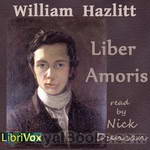 Liber Amoris
Liber Amoris
Liber Amoris is unlike anything Hazlitt wrote and probably like nothing you've come across before. On the face of it it tells the story of Hazlitt's infatuation with his landlords daughter. Hazlitt was middle aged and she young and pretty, a bit of a coquette from the sound of it. It turned out badly for Hazlitt and the book tells the story of this doomed love. Critics have always been divided about the merit of the piece. Even those who see its merit often feel more comfortable with his polished literary works, and perhaps rightly so... | |
By: Mrs. Henry Wood (1814-1887) | |
|---|---|
 East Lynne
East Lynne
Ellen Wood (1814-1887) was an English novelist, better known as Mrs. Henry Wood. She wrote over 30 novels, many of which (especially East Lynne which was a Victorian best seller and is still sometimes performed as a drama) enjoyed remarkable popularity. Lady Isabel Carlyle, a beautiful and refined young woman, leaves her hard-working but neglectful lawyer-husband and her infant children to elope with an aristocratic suitor. After he deserts her, and she bears their illegitimate child, Lady Isabel disguises herself and takes the position of governess in the household of her husband and his new wife". Summary by Wikipedia | |
By: Pauline Elizabeth Hopkins (1859-1930) | |
|---|---|
 Contending Forces
Contending Forces
Pauline Elizabeth Hopkins, despite an impressive record of productivity and creativity as a novelist, playwright, short fiction writer, editor, actress, and singer, is an African-American woman writer who has essentially been consigned to the dustbins of American literary history. Though contemporary with Frances Ellen Watkins Harper, Charles W. Chesnutt, and Paul Laurence Dunbar, Hopkins is only now beginning to receive the kind of critical attention that Harper has enjoyed for a slightly longer period and that Chesnutt and Dunbar have always had... | |
By: Lucy Madox Rossetti (1843-1894) | |
|---|---|
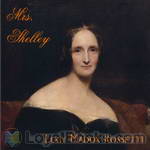 Mrs. Shelley
Mrs. Shelley
I have to thank all the previous students of Shelley as poet and man--not last nor least among whom is my husband--for their loving and truthful research on all the subjects surrounding the life of Mrs.Shelley. -Lucy Madox Brown Rossetti Mrs. Shelley is a biography of Mary Wollstonecraft Godwin Shelley, author of Frankenstein and other works, wife of Percy Shelley, daughter of Mary Wollstonecraft Godwin who penned The Vindication of the Rights of Women, and daughter of William Godwin, a philosopher and novelist... | |
By: F. M. Mayor (1872-1932) | |
|---|---|
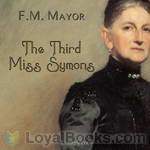 The Third Miss Symons
The Third Miss Symons
Miss Mayor tells this story with singular skill, more by contrast than by drama, bringing her chief character into relief against her world, as it passes in swift procession. Her tale is in a form becoming common among our best writers; it is compressed into a space about a third as long as the ordinary novel, yet form and manner are so closely suited that all is told and nothing seems slightly done, or worked with too rapid a hand. | |
By: Francis Hopkinson Smith (1838-1915) | |
|---|---|
 Little Gray Lady
Little Gray Lady
As every Christmas for the last 20 years, the Little Gray Lady lights a candle in her room and spends the evening alone, thinking of a great mistake she has made so long ago. This year, however, things are to play out differently.. | |
By: Edith Birkhead (1889-1951) | |
|---|---|
 Tale of Terror: A Study of the Gothic Romance
Tale of Terror: A Study of the Gothic Romance
A seminal essay on the development of horror as a genre, highly influential on later writers. | |
By: Zoe Anderson Norris | |
|---|---|
 The Way of the Wind
The Way of the Wind
From the comfort of the hills of Kentucky traveled Celia and her husband Seth to the desolate prairies of Kansas, where cyclones, tornadoes, and endless wind were to greet them. Always, there was the wind cutting across the plains as the young couple builds their home while working the soil, while Seth awaits the wise men of the east to begin building the magic city where he has staked his territory on the plains. But sometimes life plays cruel tricks upon us. Sometimes our hopes are dashed by happenstance... | |
By: Mary Roberts Rinehart (1876-1958) | |
|---|---|
 Oh, Well, You Know How Women Are and Isn't That Just Like a Man!
Oh, Well, You Know How Women Are and Isn't That Just Like a Man!
This warm, affectionate duet of essays by two of the early twentieth century's most popular writers is a bit dated but still entertaining. | |
By: Susanna Rowson (1762-1824) | |
|---|---|
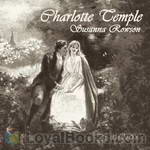 Charlotte Temple
Charlotte Temple
Charlotte Temple, a cautionary tale for young women, follows the unfortunate adventures of the eponymous heroine as she is seduced by a dashing soldier, Montraville. Influenced by both her lover and an unruly teacher at her boarding school, she is persuaded to run away to America, where she is eventually abandoned by Montraville after he becomes bored, leaving her alone and pregnant. First published in England in 1791, it went on to become America's bestselling novel, only being ousted by Harriet Beecher Stowe's Uncle Tom's Cabin. | |
By: Percy Marks (1891-1956) | |
|---|---|
 The Plastic Age
The Plastic Age
The Plastic Age (1924) is a novel by Percy Marks, which tells the story of co-eds at a fictional college called Sanford. With contents that covered or implied hazing, partying, and "petting", the book sold well enough to be the second best-selling novel of 1924. The following year, it was adapted into a film of the same name, starring Clara Bow. | |
By: Leonid Nikolayevich Andreyev (1871-1919) | |
|---|---|
 The Seven Who Were Hanged
The Seven Who Were Hanged
"I am very glad that "The Story of the Seven Who Were Hanged" will be read in English. The misfortune of us all is that we know so little, even nothing, about one another—neither about the soul, nor the life, the sufferings, the habits, the inclinations, the aspirations of one another. Literature, which I have the honor to serve, is dear to me just because the noblest task it sets before itself is that of wiping out boundaries and distances."-- Leonid Andreyev, in a letter to Herman Bernstein | |
By: Sōseki Natsume (1867-1916) | |
|---|---|
 Botchan
Botchan
Botchan is the story of a young math teacher from Tokyo whose first assignment takes him to a middle school in the country side. His arrival there is not very lucky: The pupils are bound to test his perseverance and cheerily comments every one of his perceived missteps. In the teacher's room, he soon finds himself in the middle of an intrigue between the jovial "Porcupine" and the fat "Hubbard Squash" on one side, and the effeminate "Red Shirt" and his follower "Clown" on the other. Will Botchan choose the right side in the end? Botchan - with morality as the main theme - is one of the most popular novels in Japan... | |
By: Edward Everett Hale (1822-1909) | |
|---|---|
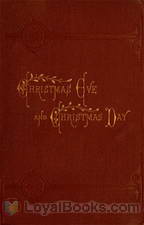 Christmas Eve and Christmas Day
Christmas Eve and Christmas Day
This is a collection of ten Christmas Stories, some of which have been published before. I have added a little essay, written on the occasion of the first Christmas celebrated by the King of Italy in Rome. | |
 Man Without A Country And Other Tales
Man Without A Country And Other Tales
Edward Everett Hale (1822 – 1909) was an American author, historian and Unitarian clergyman. Hale first came to notice as a writer in 1859, when he contributed the short story "My Double and How He Undid Me" to the Atlantic Monthly. He soon published other stories in the same periodical. His best known work was "The Man Without a Country", published in the Atlantic in 1863 and intended to strengthen support in the Civil War for the Union cause in the North. Though the story is set in the early 19th century, it is an allegory about the upheaval of the American Civil War... | |
By: Charles Norris Williamson | |
|---|---|
 The Golden Silence
The Golden Silence
Trying to get away from an engagement he had got himself into more or less against his will, Stephen Knight travels to Algiers to visit his old friend Nevill. On the Journey there he meets the charming and beautiful Victoria. She is on her way to Algiers to search for her sister, who had disappeared years ago after marrying an Arab nobleman. With the support of his friend, Stephen Knight decides to help the girl - but when she also disappears, the adventure begins... | |
By: Arthur Griffiths (1838-1908) | |
|---|---|
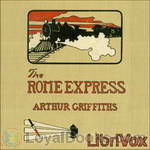 The Rome Express
The Rome Express
The passengers in the sleeping car of the Rome Express were just woken and informed that they will reach Paris soon, and a general bustle fills the train. Only one passenger cannot be awoken by the porter, no matter how loudly he knocks on the compartment door. At last, when the door is forced open, the occupant of the compartment is found dead - stabbed to the heart! The murderer must be found among the passengers... | |
 Passenger from Calais
Passenger from Calais
An army officer, and a mysterious lady with a maid and baby in tow, are the only passengers on the Engadine express from Calais. The lady is afraid that someone is following her. Who is she? And what is her strange package? One suspicious conversation and two private detectives later Colonel Basil Annesley is determined to find out! | |
By: May Sinclair (1863-1946) | |
|---|---|
 Mr. Waddington of Wyck
Mr. Waddington of Wyck
May Sinclair’s 1921 novel tells the story of the ridiculous Mr. Horatio Bysshe Waddington, a pompous, self-deluded poser making his way through life caring only for the impressions he makes on others. His long-suffering wife Fanny, his secretary Barbara, and the young scapegrace Ralph watch his daily performances with delighted, affectionate fascination as if they are spectators watching a play or scientists observing a new species, wondering every day how far he will go to fulfill his outrageous pretentions. As usual, Sinclair’s light, deceptively innocent prose camouflages a tale of sexual passions and human foibles with philosophical implications about her post-war world. | |
 Life and Death of Harriett Frean
Life and Death of Harriett Frean
Harriett Frean is a well-to-do, unmarried woman living a life of meaningless dependency, boredom, and unproductivity as she patiently cares for her aging parents, waiting for a man to marry. When her opportunity for Love finally comes, she is offered a moral dilemma: the man is engaged to her best friend. Should she sacrifice what, according to the priorities of the time, seems like her "one chance for happiness," or should she seize the moment? Can she make something meaningful of her life without... | |
 Three Sisters
Three Sisters
Fascinated as she was by the lives of the Brontë siblings, May Sinclair loosely based her subtly sensual, quietly insurrectionary 1914 novel The Three Sisters on the Haworth moor milieu of the three literary Brontë sisters. Alice, Gwenda, and Mary Cartaret are the daughters of the Vicar of Garth, an abusive father with rigid, selfish expectations for female behavior. Hope of rescue seems to dawn in the person of an idealistic young doctor in the village, but this is no Austen romance. Described... | |
 Romantic
Romantic
As a simple story told, "The Romantic" is one of Sinclair’s tightest and most compelling. Charlotte Redhead, a young British secretary, finds herself in a degrading extra-marital affair with her boss. In reaction, she renounces Sex and links herself platonically to a handsome young Bohemian (John Conway) she meets by chance, tramping in the fields. Together, under a powerful romantic excitement, the two rush off to Belgium in the early weeks of World War I, having organized their own little volunteer ambulance corps... | |
 Tysons
Tysons
Another frank May Sinclair exploration of fin de siècle English love and sex, marriage and adultery, "The Tysons" is the story of the caddish Nevill Tyson and his beautiful but frivolous young wife Molly. Sinclair uses a different narrative voice than we hear in much of her fiction, a sort of witty Jane Austen archness as she dissects the characters of the provincial village Drayton Parva. As always, she demonstrates an intriguing mixture of Victorian prudishness and modern free-thinking, particularly in her rendering of the sexual escapades of her characters... | |
 Audrey Craven
Audrey Craven
In May Sinclair’s remarkable first novel, Audrey Craven is a beautiful young woman who has by her idiosyncracies acquired a thoroughly undeserved reputation for originality. In fact, Audrey is a shallow, selfish, malleable person of negligible intelligence, with a fastidious horror of anyone who might be considered a nobody. Her pursuit of the stimulation of extraordinary minds (and her persistent fantasy of being somebody’s Muse) brings her into contact with serious women and men representing the profoundest passions of art, religion, science, and love... | |
 Anne Severn and the Fieldings
Anne Severn and the Fieldings
Written in an era of cheap, formulaic romantic fiction, the nuanced, seditious, quietly erotic novels of May Sinclair stand out like literature from another era entirely. There is romance in “Anne Severn & the Fieldings,” but it’s romance of the best and profoundest kind, set in the context of authentic human personalities and tragic historical events. The motherless Anne Severn is adopted into the Fielding family and grows up in intimate friendship with the three Fielding sons, all of whom love her... | |
By: William H. Hudson (1841-1922) | |
|---|---|
 A Crystal Age
A Crystal Age
A Crystal Age is a utopian novel written by W. H. Hudson, first published in 1887. The book has been called a "significant S-F milestone" and has been noted for its anticipation of the "modern ecological mysticism" that would evolve a century later. | |
 Shepherd's Life; Impressions Of The South Wiltshire Downs
Shepherd's Life; Impressions Of The South Wiltshire Downs
Hudson wrote this classic work in 1910; it is admiringly mentioned by many other writers. It focuses on the memories of a head shepherd, Caleb Bawcombe, so it is concerned with the period of mid to late nineteenth century rural Wiltshire, a county in England. This pleasant engaging book contains rural wisdom, natural history, farming practices, human characters, and more | |
By: Martin Andersen Nexø (1869-1954) | |
|---|---|
 Pelle the Conqueror
Pelle the Conqueror
When the first part of "Pelle Erobreren" (Pelle the Conqueror) appeared in 1906, its author, Martin Andersen Nexo, was practically unknown even in his native country, save to a few literary people who knew that he had written some volumes of stories and a book full of sunshiny reminiscences from Spain. And even now, after his great success with "Pelle," very little is known about the writer. He was born in 1869 in one of the poorest quarters of Copenhagen, but spent his boyhood in his beloved island Bornholm, in the Baltic, in or near the town, Nexo, from which his final name is derived... | |
By: Dorothy Richardson (1873-1957) | |
|---|---|
 Pointed Roofs
Pointed Roofs
Miriam Henderson is one of what novelist Dolf Wyllarde (in her great work, The Pathway of the Pioneer) termed "nous autres," i.e., young gentlewomen who must venture forth and earn their living after their fathers have been financially ruined. Also, she has read Villette; she thus applies for and is offered a job teaching conversational English at a girls' school, albeit in Germany rather than France. Pointed Roofs describes her year abroad, as she endeavors to make her way in the hotbed of seething female personalities that populate the school, overseen by her employer, the formidable Fraulein... | |
By: Conrad Aiken (1889-1973) | |
|---|---|
 House of Dust: A Symphony
House of Dust: A Symphony
The House of Dust is a poem written in the four-movement format of a classical symphony. Hauntingly beautiful despite its bleak post-World War I depictions of human mortality and loss, the poem develops its movements around central images such as Japanese ukiyo-e ("floating world") woodblock prints, touching the reader's senses with endlessly evocative allusions to wind, sea, and weather. In this underlying Japanese sensibility and dependence on central perceptual images, Aiken's poem is similar to poetry of Imagists of the time such as Amy Lowell. Also deeply influenced by the concepts of modern psychology, Aiken delved deeply into individual human identity and emotion. | |
By: Charles Waddell Chesnutt (1858-1932) | |
|---|---|
 House Behind the Cedars
House Behind the Cedars
In this, Chesnutt's first novel, he tells the tragic story of love set against a backdrop of racism, miscegenation and “passing” during the period spanning the antebellum and reconstruction eras in American history. And through his use of the vernacular prevalent in the South of that time, Chesnutt lent a compassionate voice to a group that America did not want to hear. More broadly, however, Chesnutt illustrated, in this character play, the vast and perhaps insurmountable debt this country continues to pay for the sins of slavery. | |
 Colonel's Dream
Colonel's Dream
In this novel, Chesnutt described the hopelessness of Reconstruction in a post-Civil War South that was bent on reestablishing the former status quo and rebuilding itself as a region of the United States where new forms of "slavery" would replace the old. This novel illustrated how race hatred and the impotence of a reluctant Federal Government trumped the rule of law, ultimately setting the stage for the rise of institutions such as Jim Crow, lynching, chain gangs and work farms--all established with the intent of disenfranchising African Americans. | |
By: Frank Wedekind (1864-1918) | |
|---|---|
 Earth Spirit
Earth Spirit
Earth Spirit (1895) (Erdgeist) is a play by the German dramatist Frank Wedekind. It forms the first part of his pairing of 'Lulu' plays (the second is Pandora's Box [1904]), both of which depict a society "riven by the demands of lust and greed". Together with Pandora's Box, Wedekind's play formed the basis for the silent film Pandora's Box (1929) starring Louise Brooks and the opera Lulu by Alban Berg in 1935 (premiered posthumously in 1937). The eponymous "earth spirit" of this play is Lulu, who Wedekind described as a woman "created to stir up great disaster... | |
By: Ellis Meredith (1865-1955) | |
|---|---|
 The Master-Knot of Human Fate
The Master-Knot of Human Fate
A tale of two people, and their search for answers to unknown questions. Adam and Robin find themselves inexplicably alone after an apparent natural cataclysm, and are compelled to learn how to survive, how to endure, but most importantly to themselves, how to enjoy, understand their new roles in life, and understand each other. (Introduction by Roger Melin) | |
By: Marie Corelli (1855-1924) | |
|---|---|
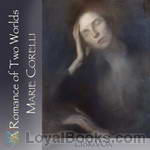 A Romance of Two Worlds
A Romance of Two Worlds
A Romance of Two Worlds starts with a young heroine telling her story of a debilitating illness that includes depression and thoughts of suicide. Her doctor is unable to help her and sends her off on a holiday where she meets a mystical character by the name of Raffello Cellini, a famous Italian artist. Cellini offers her a strange potion which immediately puts her into a tranquil slumber, in which she experiences divine visions. | |
By: Christina Rossetti (1830-1894) | |
|---|---|
 Long Ago
Long Ago
LibriVox volunteers bring you 12 recordings of Long Ago by Christina G. Rossetti. This was the Weekly Poetry project for December 9, 2012.Christina Georgina Rossetti (5 December 1830 – 29 December 1894) was an English poet who wrote a variety of romantic, devotional, and children's poems. She is perhaps best known for her long poem Goblin Market, her love poem Remember, and for the words of the Christmas carol In the Bleak Midwinter. | |
By: A.E.W. Mason | |
|---|---|
 At the Villa Rose
At the Villa Rose
Harry Wethermill, the brilliant young scientist, a graduate of Oxford and Munich, has made a fortune from his inventions, and is taking a vacation at Aix-les-Bains. There he meets, and immediately falls in love with, the young and beautiful Celia Harland, who serves as companion to the aging but warm-hearted Madam Dauvray of Paris. All this is observed by Julius Ricardo, a retired financier from the City of London, who spends every August at Aix, expecting there to find a pleasant and peaceful life... | |
By: A. E. W. Mason (1865-1948) | |
|---|---|
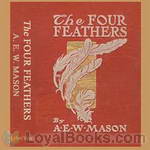 The Four Feathers
The Four Feathers
The Four Feathers is a 1902 adventure novel by British writer A.E.W. Mason that has inspired many films of the same title.The novel tells the story of British officer, Harry Feversham, who resigns his commission in the East Surrey Regiment just prior to Sir Garnet Wolseley's 1882 expedition to Egypt to suppress the rising of Urabi Pasha. He is faced with censure from three of his comrades for cowardice, signified by the delivery of three white feathers to him, from Captain Trench and Lieutenants Castleton and Willoughby, and the loss of the support of his Irish fiancée, Ethne Eustace, who presents him with the fourth feather... | |
By: Jacques-Henri Bernardin de Saint-Pierre | |
|---|---|
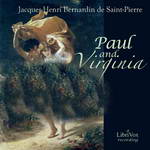 Paul and Virginia
Paul and Virginia
Paul and Virginia was first published in 1787. The novel's title characters are very good friends since birth who fall in love, but sadly die when the ship Le Saint-Geran is wrecked. The story is set in the island of Mauritius under French rule, then named Île de France, which the author had visited. Written on the eve of the French Revolution, the novel is hailed as Bernardin's finest work. It records the fate of a child of nature corrupted by the false, artificial sentimentality that prevailed at the time among the upper classes of France. | |
By: Ellis Parker Butler (1869-1937) | |
|---|---|
 Cheerful Smugglers
Cheerful Smugglers
Saving for the baby's education: how can a young family be disciplined so as to regularly put money in the pig (bank)? Why, put a tariff on all items coming into the house, just like the U.S. Government does/did for items coming into the country! But the devil is in the details; what about taxing items brought in by visitors? Is the housemaid herself a taxable item? What items really are 'necessaries' versus luxuries? When visitors arrive these guests stoop to either 'smuggling' in their luggage items to avoid having to pay up to 30% of the value, or wear only what they came dressed in... | |
By: H. Beam Piper and John McGuire (1904-1964) | |
|---|---|
 Hunter Patrol
Hunter Patrol
World War IV has dragged on for 12 years and the whole world is drained and tired of the killing and destruction. One man, a high school chemistry teacher from St. Louis in the USA, is serving his latest forced stint in the UN forces when something strange happens to him. He dies but yet he doesn't. What if you had the power to bring peace to the entire world? What would you do? This story explores a frightening and strange journey into the murky depths of human needs and desires and how they can twist and turn back upon us. | |
By: Agnes Repplier (1855-1950) | |
|---|---|
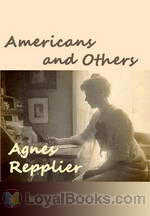 Americans and Others
Americans and Others
A collection of sometimes biting, always clever commentaries on some of life's foibles -- as apt today as when Ms. Repplier wrote them in 1912. Though less know to modern readers, Repplier was in her prime ranked among the likes of Willa Cather. Note: Section 13 contains the word niggards. I put it in print here so that it will not be mistaken for a racial epithet when heard. (written by Mary Schneider) | |
By: John C. Hutcheson (1840-1897) | |
|---|---|
 The Ghost Ship
The Ghost Ship
This book intentionally veers in and out of the supernatural, as the title implies. The officers get more and more bewildered as they work out their position, and yet again encounter the same vessel going in an impossible direction. Having warned you of this, I must say that it is a well-written book about life aboard an ocean-going steamer at about the end of the nineteenth century. | |
By: Emma Wolf (1865-1932) | |
|---|---|
 Other Things Being Equal
Other Things Being Equal
Ruth Levice, the daughter of a rich San Francisco Jewish merchant, meats Dr. Herbert Kemp, and they slowly fall in love. However, she is Jewish and he is not. Can love overcome such an obstacle? And what is more important, duty or love? | |
By: E.D.E.N. Southworth (1819-1899) | |
|---|---|
 The Missing Bride
The Missing Bride
Prepare yourself for a journey, full of adventures and plot twists which will keep you guessing until the very end. This is psychological romance at its best. In the war of 1814, an American heiress falls in love with a British officer. This ill-fated marriage brings together a large group of interesting people who would never have met in other circumstances. | |
By: Mary Jane Holmes (1828-1907) | |
|---|---|
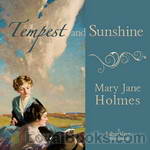 Tempest and Sunshine
Tempest and Sunshine
Tempest and Sunshine is the first book written by Mary Jane Holmes. Set in the pre-Civil War south, it follows the struggles and romances of two sisters, as different as night and day; blonde Fanny and dark haired Julia. (Introduction by jedopi) | |
By: William Cullen Bryant (1794-1878) | |
|---|---|
 Midsummer
Midsummer
LibriVox volunteers bring you 14 recordings of Midsummer by William Cullen Bryant. This was the Weekly Poetry project for June 23, 2013.This poem taken from the Poetical Works of William Cullen Bryant, Household Edition. | |
By: John Berryman (1919-1988) | |
|---|---|
 Card Trick
Card Trick
The Psi Lodge had their ways and means of applying pressure, when pressure was needed. But the peculiar talent this fellow showed was one that even they'd never heard of...! | |
By: Edgar A. Guest (1881-1959) | |
|---|---|
 All That Matters
All That Matters
A collection of poems about life. Written in an easy and interesting style this book includes poems about many parts of family life, motherhood, babies, dads, and youth. None of them long, they focus the listener on the blessings of life. | |
By: Edward Eggleston (1837-1902) | |
|---|---|
 Hoosier Schoolmaster
Hoosier Schoolmaster
"Want to be a school-master, do you? You? Well, what would you do in Flat Crick deestrick, I'd like to know? Why, the boys have driv off the last two, and licked the one afore them like blazes. You might teach a summer school, when nothin' but children come. But I 'low it takes a right smart man to be school-master in Flat Crick in the winter. They'd pitch you out of doors, sonny, neck and heels, afore Christmas." | |
By: George Griffith (1857-1906) | |
|---|---|
 Honeymoon in Space
Honeymoon in Space
| |
By: Robert Lynd (1879-1949) | |
|---|---|
 Old and New Masters
Old and New Masters
Jane Austen, WB Yeats, Chesterton, Shaw... these are personal and intelligent short essays on a selection of great (and great-ish) writers: some well known, and some a bit more obscure to the average reader today. Robert Lynd (1879 – 1949) is best known as a literary essayist and Irish nationalist. He published many essays, all written in an easy, conversational style. Lynd was an essayist after the manner of Charles Lamb, and deserves to be better known. A complete list of his works is available at Wikipedia: http://en.wikipedia.org/wiki/Robert_Wilson_Lynd | |
By: Friedrich de la Motte Fouqué (1777-1843) | |
|---|---|
 Sintram and His Companions
Sintram and His Companions
Friedrich de la Motte Fouque, also the author of Undine, was a German Romantic writer whose stories were filled with knights, damsels in distress, evil enchantments, and the struggle of good against overpowering evil. 'My strength is as the strength of ten, Because my heart is pure.' Fouque blends the Romantic love for nature and ancient chivalry while telling a powerful story about a young man who yearns for that which he can never attain. | |
By: Guy Boothby (1867-1905) | |
|---|---|
 Bid For Fortune; Or, Dr Nikola's Vendetta
Bid For Fortune; Or, Dr Nikola's Vendetta
Guy Newell Boothby (1867 – 1905) was a prolific Australian writer. He moved to London in 1894 and became most well-known for his Dr.Nikola mysteries. This book is the first in a series of five and introduces the good doctor himself. Dr Nikola Is a criminal mastermind with an occult twist and like much fiction of that era this book and the following are more about how others fall under his spell and into his web. Here we have an adventure and love story that sweeps us from Australia, the South Seas, the Middle East and rural Hampshire with our lovestruck hero constantly battling against Dr Nikola and his cohorts... | |
By: Joseph Crosby Lincoln (1870-1944) | |
|---|---|
 Cape Cod Stories
Cape Cod Stories
This book (eleven short stories) was also published under the title of “The Old Home House”. Joseph Crosby Lincoln (1870 – 1944) was an American author of novels, poems, and short stories, many set in a fictionalized Cape Cod. Lincoln's work frequently appeared in popular magazines such as the Saturday Evening Post and The Delineator.... Lincoln claimed that he was satisfied "spinning yarns" that made readers feel good about themselves and their neighbors. Two of his stories have been adapted to film... | |
By: Gertrude Atherton (1857-1948) | |
|---|---|
 Rezanov
Rezanov
This novel by the prolific Californian author Gertrude Horn Atherton is based on the real life story of Nikolai Rezanov, a man who, in 1806, pushed for the Russian colonization of Alaska and California. "Not twenty pages have you turned before you know this Rezanov, privy councilor, grand chamberlain, plenipotentiary of the Russo-American company, imperial inspector of the extreme eastern and northwestern dominions of his imperial majesty Alexander the First, emperor of Russia—all this and more, a man... | |
 Valiant Runaways
Valiant Runaways
Savage bears, a river rescue, capture by Indians, escape on wild mustangs and a revolutionary battle await the protagonists of this suspenseful adventure novel, set in California. | |
 Sleeping Fires
Sleeping Fires
The story of a love so strong that neither the rigid rules of Society in California in the 1800s nor the very bowels of hell could keep a young woman from the love she had found. A story rich in fashion ad feminism showing how determination and love could overcome all obstacles. | |
 Senator North
Senator North
"When, Mr. President, a man, however eminent in other pursuits and whatever claims he may have to public confidence, becomes a member of this body, he has much to learn and much to endure. Little does he know of what he will have to encounter. He may be well read in public affairs, but he is unaware of the difficulties which must attend and embarrass every effort to render what he may know available and useful. He may be upright in purpose and strong in the belief of his own integrity, but he cannot... | |
By: Henry Blake Fuller (1857-1929) | |
|---|---|
 Bertram Cope's Year
Bertram Cope's Year
This novel was perhaps the most daring and affirmative LGBT literature of the first two decades of the 20th century in America. In this story, Bertram Cope is a young college instructor, about twenty-four years old ("certainly not a day over twenty-five"), who is pursued by men and women, both younger and older than himself. In writing this novel, Fuller had to carefuly craft his plot schemes so as not to offend the sensibilities of publishers. As a result, today's reader is left somewhat, but not entirely, confused about the precise feelings that characters develop for one another by the end of the book... | |
By: Roy Rockwood | |
|---|---|
 Dave Dashaway and His Hydroplane
Dave Dashaway and His Hydroplane
Never was there a more clever young aviator than Dave Dashaway. All up-to-date lads will surely wish to read about him. This second volume of the series shows how Dave continued his career as a birdman and had many adventures over the Great Lakes, and how he foiled the plans of some Canadian smugglers. (From the 1913 edition) | |
By: Jack Williamson (1908-2006) | |
|---|---|
 Salvage in Space
Salvage in Space
This is an SF tale of excitement, danger, derring-do and strangely enough, love. A lonely and very poor asteroid miner, slowly collecting bits of metallic ore in the asteroid belt on his slowly accumulating 'planet' of debris, sees and captures a derelict space ship with a horrible monster aboard .. as well as a dead but lovely girl. How does it all end? Well you will need to listen to find out. One of Jack Williamson's early tales that earned him his reputation as a master story teller. | |
By: Edward P. Roe (1838-1888) | |
|---|---|
 He Fell in Love with His Wife
He Fell in Love with His Wife
James desperately needs someone to help him keep his farm going, but has failure after colossal failure finding a good housekeeper. Alida marries a man only to find out he's already married. She's so undone when she finds out that she just wants to go somewhere where no one will judge her for her misfortune, where she can work and keep herself fed and clothed. James and Alida meet and arrange for a strictly business marriage, leaving loving and honoring out of the vows. The title of the book tells the rest of the story, but the way it gets there is worth the journey. (Introduction by TriciaG) | |
By: Robert Louis Stevenson and Lloyd Osbourne (1850-1894) | |
|---|---|
 The Ebb-Tide
The Ebb-Tide
Three men down on their luck in Tahiti agree to ship out on a vessel whose officers have died of smallpox. Their desperate venture inspires them to a further idea: they will steal the schooner and its cargo of champagne, sell them, and live a plentiful life. The thought is intoxicating... and so is the cargo, which they sample. Inattention nearly brings them to grief in a sudden storm. This sobering experience is followed by another - apparently the dead officers had a similar ambition! - and their dreams of riches vanish... | |
By: Robert Louis Stevenson (1850-1894) | |
|---|---|
 Wrecker
Wrecker
The Wrecker (1892) is a novel written by Robert Louis Stevenson in collaboration with his stepson Lloyd Osbourne. The story is a 'sprawling, episodic adventure story, a comedy of brash manners and something of a detective mystery'. It revolves around the abandoned wreck of the Flying Scud at Midway Island. Clues in a stamp collection are used to track down the missing crew and solve the mystery. It is only in the last chapter that different story elements become linked. | |
By: Arthur J. Rees (1872-1942) | |
|---|---|
 The Shrieking Pit
The Shrieking Pit
The Shrieking Pit is one of Arthur Rees's earlier works, and is a good old fashioned murder mystery story. Grant Colwyn, a private detective, is holidaying in East Anglia when he notices a young man at a nearby table behaving peculiarly. The young man later leaves the hotel without paying his bill, and turns up in a nearby hamlet in the Norfolk marshes where he takes lodgings at the village inn. The next day, another guest at the inn is found dead, and the young man is missing. Can Colwyn sort out the mystery and prove the young man's innocence one way or the the other? | |
By: Thomas Dixon, Jr. (1864-1946) | |
|---|---|
 Clansman, An Historical Romance of the Ku Klux Klan
Clansman, An Historical Romance of the Ku Klux Klan
The second book in a trilogy of the Reconstruction era - The Leopard's Spots (1902), The Clansman (1905), and The Traitor (1907), this novel was the basis for the 1915 silent movie classic, "The Birth Of A Nation". Within a fictional story, it records Dixon's understanding of the origins of the first Ku Klux Klan (his uncle was a Grand Titan during Dixon's childhood), recounting why white southerners' began staging vigilante responses to the savage personal insults, political injustices and social cruelties heaped upon them during Reconstruction... | |
By: Marietta Holley (1836-1926) | |
|---|---|
 Poems
Poems
This is a collection of poems by Marietta Holley, better known as Josiah Allen's Wife. | |
By: Natalie Sumner Lincoln (1881-1935) | |
|---|---|
 The Red Seal
The Red Seal
Nothing is what it seems to be as events unfold in this entertaining mystery by Natalie Sumner Lincoln. Red seals and red herrings abound and will keep you guessing all the way through the final chapter! | |
By: Alice Meynell (1847-1922) | |
|---|---|
 Fold
Fold
Alice Christiana Gertrude Meynell was an English writer, editor, critic, and suffragist, now remembered mainly as a poet. At the end of the 19th century, in conjunction with uprisings against the British (among them the Indians', the Zulus', the Boxer Rebellion, and the Muslim revolt led by Muhammad Ahmed in the Sudan), many European scholars, writers, and artists, began to question Europe's colonial imperialism. This led the Meynells and others in their circle to speak out for the oppressed. Alice Meynell was a vice-president of the Women Writers' Suffrage League, founded by Cicely Hamilton and active 1908–19. | |
By: Eleanor Farjeon (1881-1965) | |
|---|---|
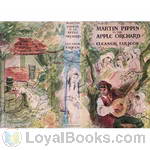 Martin Pippin in the Apple Orchard
Martin Pippin in the Apple Orchard
The wandering minstrel Martin Pippin finds a lovelorn ploughman who begs him to visit the orchard where his beloved has been locked in the well-house with six sworn virgins to guard her. Martin Pippin goes to the rescue and wins the confidence of the young women by telling them love stories. Although ostensibly a children's book, the six love stories, which have much the form of Perrault's fairy tales such as Beauty and the Beast and Cinderella, have a depth which is adult in sentiment, and indeed they were written not for a child but for a young soldier, Victor Haslam... | |
By: Henry Gilbert (1868-1937) | |
|---|---|
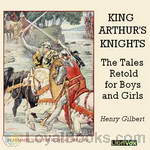 King Arthur's Knights: The Tales Retold for Boys & Girls
King Arthur's Knights: The Tales Retold for Boys & Girls
This book is an attempt to tell some of the stories of King Arthur and his Knights in a way which will be interesting to every boy and girl who loves adventures. (Introduction by Henry Gilbert) | |
By: Hugh Walpole (1884-1941) | |
|---|---|
 Jeremy
Jeremy
With affectionate humor, Mr. Walpole tells the story of Jeremy and his two sisters, Helen and Mary Cole, who grow up in Polchester, a quiet English Cathedral town. There is the Jampot, who is the nurse ; Hamlet, the stray dog ; Uncle Samuel, who paints pictures and is altogether 'queer’; of course, Mr. and Mrs. Cole, and Aunt Amy. Mr. Walpole has given his narrative a rare double appeal, for it not only recreates for the adult the illusion of his own happiest youth, but it unfolds for the child-reader a genuine and moving experience with real people and pleasant things... | |
By: James Cardinal Gibbons (1834-1921) | |
|---|---|
 The Faith of Our Fathers
The Faith of Our Fathers
The Faith of Our Fathers: A Plain Exposition and Vindication of the Church Founded by Our Lord Jesus Christ is a book published in 1876 by archbishop James Gibbons, which became a best-selling conversion manual in the United States, and by 1980 was in its 111th printing.(From the preface) “The object of this little volume is to present in a plain and practical form an exposition and vindication of the principal tenets of the Catholic Church. It was thought sufficient to devote but a brief space to such Catholic doctrines and practices as are happily admitted by Protestants, while those that are controverted by them are more elaborately elucidated... | |
By: Mikhail Yurevich Lermontov (1814-1841) | |
|---|---|
 Hero of Our Time
Hero of Our Time
A Hero of Our Time is indeed a portrait, but not of one man. It is a portrait built up of all our generation's vices in full bloom. You will again tell me that a human being cannot be so wicked, and I will reply that if you can believe in the existence of all the villains of tragedy and romance, why wouldn't believe that there was a Pechorin? If you could admire far more terrifying and repulsive types, why aren't you more merciful to this character, even if it is fictitious? Isn't it because there's more truth in it than you might wish? | |
By: Charles W. Diffin (1884-1966) | |
|---|---|
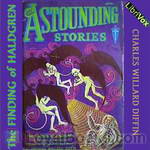 The Finding of Haldgren
The Finding of Haldgren
Chet Ballard answers the pinpoint of light that from the craggy desolation of the moon stabs out man's old call for help. | |
By: Hallie Erminie Rives (1874-1956) | |
|---|---|
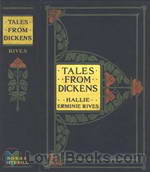 Tales From Dickens
Tales From Dickens
The Old Curiosity Shop; Hard Times; A Tale of Two Cities; Oliver Twist; The Pickwick Papers. Have you read any or all of these famous Dickens stories? The author of this marvelous book, Rives Ermine, a highly successful author in her own right, simply wanted to retell the basic elements of some of Dickens best beloved novels and story lines. Now is your chance to revisit these stories and revive the memories of great reads. Of it you haven't gotten around to some of these classics, this would be a marvelous chance to listen to what they are about so you can enjoy them even more in the original later... | |
By: George Crabbe (1754-1832) | |
|---|---|
 Borough
Borough
English village life and villagers in the east of England in the late 1700’s and early 1800s—is the subject of The Borough. George Crabbe was an English poet, surgeon, and clergyman. He is best known for his early use of the realistic narrative form and his descriptions of middle and working-class life and people. Lord Byron, an avowed admirer of Crabbe's poetry, described him as "nature's sternest painter, yet the best." Crabbe's poetry was predominantly in the form of heroic couplets, and has been described as unsentimental in its depiction of provincial life and society... | |
By: Grace Isabel Colbron | |
|---|---|
 The Case of the Pool of Blood in the Pastor’s Study
The Case of the Pool of Blood in the Pastor’s Study
Joseph Muller, police detective, travels to a remote Hungarian village to discover the truth behind the murder of a beloved village Pastor. (Introduction by Dawn) | |
By: Augusta Groner (1850-1929) | |
|---|---|
 Case Of The Registered Letter
Case Of The Registered Letter
A man is found shot dead and the man to whom all evidence points insists he is innocent. | |
By: H. De Vere Stacpoole (1863-1951) | |
|---|---|
 Beach of Dreams
Beach of Dreams
Two sailors, Harbutt and Raft, discuss their plight as workers under the thumb of a wealthy owner. During a windstorm, Raft and his fellow hands must climb a mast of the three-master to control a rigging gone astray. Once they master that runaway rigging, they pause to watch another vessel in the distance. It's a ship many have seen before. We are introduced to the occupants of this new ship, the Gaston de Paris. The owner is Prince Selm, who loves the finest things in life, yet is drawn to the sea... | |
By: Francis T. Palgrave (1824-1897) | |
|---|---|
 Golden Treasury of the Best Songs and Lyrical Pieces In the English Language
Golden Treasury of the Best Songs and Lyrical Pieces In the English Language
Palgrave's principal contribution to the development of literary taste was contained in his Golden Treasury of English Songs and Lyrics (1861), an anthology of the best poetry in the language constructed upon a plan sound and spacious, and followed out with a delicacy of feeling which could scarcely be surpassed. This book is a delightful one to listen to with family or friends. You're sure to find something to relate to in these wonderful poems. | |
By: Thomas A. Janvier (1849-1913) | |
|---|---|
 Uncle Of An Angel
Uncle Of An Angel
In what I have read so far this book appears to be a humorous character study on two levels. That between the uncle and niece and that of polite society in the 19th century. Anything can happen. I for one want to find out what will happen!! | |
By: Lawrence L. Lynch (1853-1914) | |
|---|---|
 Against Odds
Against Odds
Believed to have been written by Chicago socialite, Emma Murdock Van Deventer, this detective story set at the World's Fair follows Carl Masters as he is in pursuit of international criminals Greenback Bob and Delbras. Conmen, lost handbags, jewel robberies, an adventuress... not to mention two missing young men and a murder, all come under the detective's eye. ( Lynne Thompson) | |